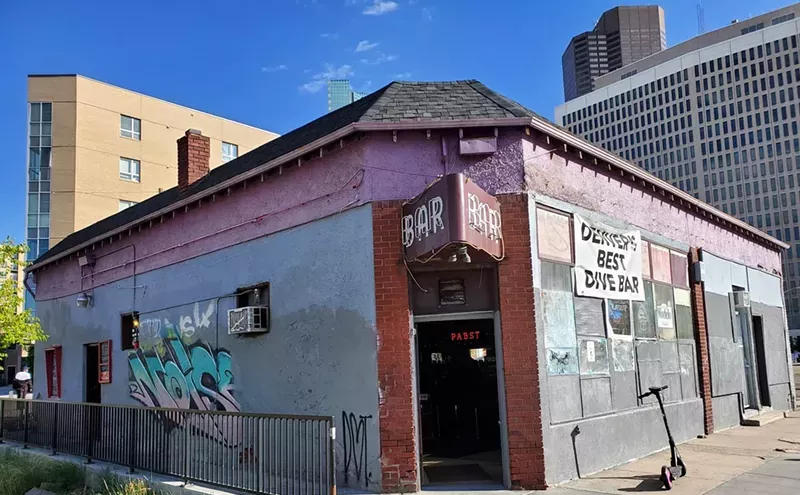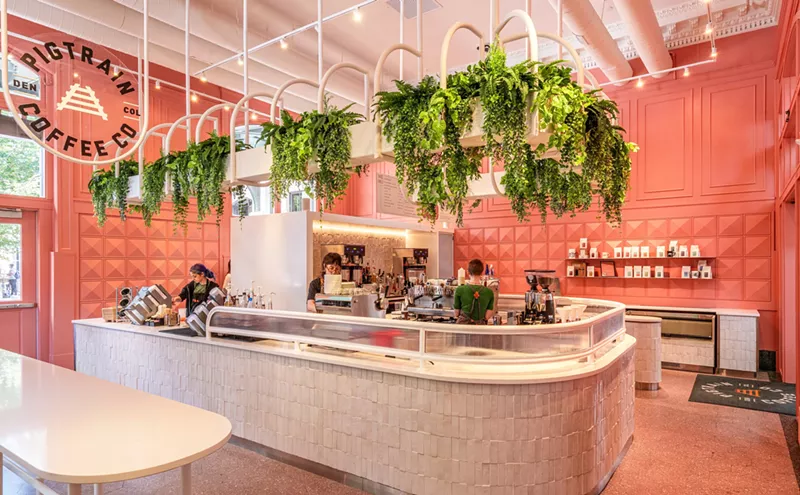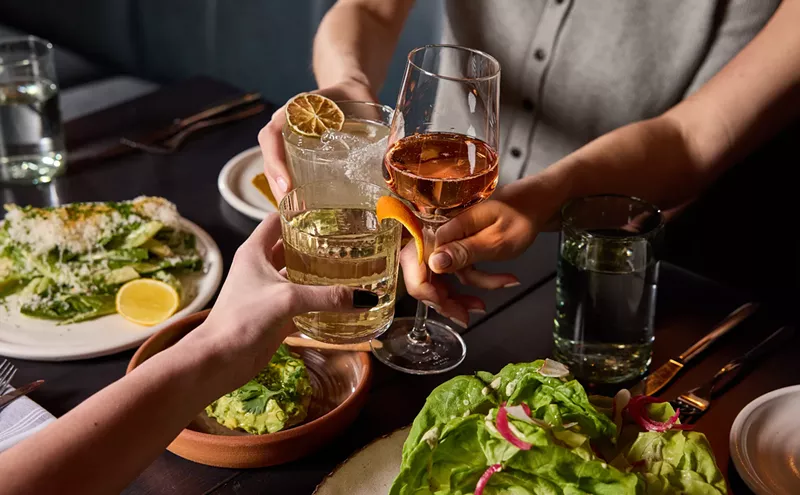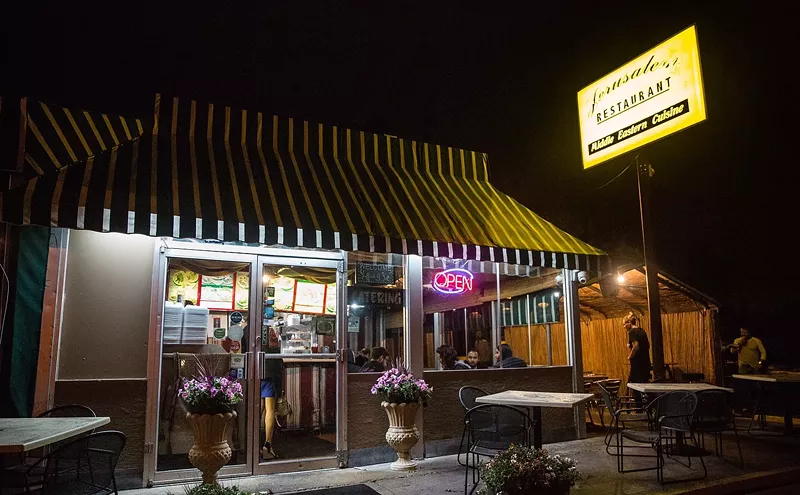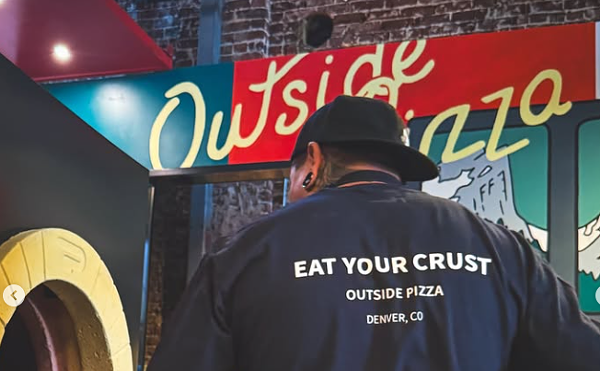Hands on your buzzers, everyone! Here's a trivia question: "High-school seniors share this in common with Cafe Berlin." (Insert Jeopardy music here.)
If you answered "What is 1995?," you'd be right. In 1995, most of those seniors were in diapers, and Cafe Berlin, Denver's longtime standby for hearty German fare, opened in its original location, on East 17th Avenue. Bill Clinton was president, movies were rented on VHS from Blockbuster, and everyone knew all the moves to the Macarena.
A lot has changed in seventeen years.
Photos: Behind the scenes at Cafe Berlin
Or has it? When you step inside the current home of Cafe Berlin — it moved to a second-story space above the 16th Street Mall last year, after six years on 14th Street — you feel like you could be back in the '90s, chuckling at Bubba, toting around a boombox, and eating the same gravy-covered schnitzel.
German-born Marlene Garrett, who purchased the restaurant from its founder in 1998, helped design the original menu. She's been a presence in the kitchen from the beginning, and under her culinary and managerial leadership, Cafe Berlin has successfully navigated nearly two decades of boom-and-bust economies. Such longevity is to be admired — indeed, envied — in this notoriously tricky industry, but it's come at a cost. In a city where creativity and innovation now reign, where menus change quarterly, if not monthly, and diners take for granted tenets espoused by both Alice Waters and Michael Pollan, this steady-Eddie approach translates into a dining experience both tired and outdated. If ever a place were in need of intervention by Restaurant: Impossible, this is it.
As you climb the stairs to Cafe Berlin, you can never be sure what — or who — you'll find. Come at lunch, and the gold-and-burgundy dining room, with beer steins lining shelves and a dominant mahogany bar, might be buzzing with men grabbing liters of German beer on tap and tucking in to large plates of bratwurst and sides. At dinner the place can be so empty — as it was on one recent visit — that you're afraid to talk for fear that the few other guests might overhear. At times like those, the brilliantly colored street scenes hanging on the walls seem sad, a reminder of pre-war Europe's faded glory.
The menu at both meals is large, with eleven appetizers, eleven lunch entrees and nearly twenty dinner entrees. Many recipes were handed down by Garrett's grandmother — and they feel like it, with more heavy sauces and breading than I've seen in a sit-down restaurant in a long time. While Garrett and current chef Luis Diaz do tinker with the food somewhat, offering more salads in the summer and more stick-to-your-bones specials in the winter, the bulk of the offerings has hardly changed over the years.
Uninitiated diners might order an appetizer, perhaps the herring or potato pancakes. Not pickled in-house, the fish is cut in large, uneven pieces and tossed haphazardly on a mound of lettuce without any hint of the promised wine sauce. Potato pancakes, two per plate, are so pale and undercooked, even the sour cream and homemade applesauce can't make up for their flabbiness and lack of salt (a chronic problem across the menu). But since entrees come with bread, soup or salad and a choice of two sides, you don't really need a first course — and two of the better appetizers can be ordered as the soup or salad course. The split-pea soup, full of rich flavor from the ham, is so good you'll finish every bite. Gurkensalat, a salad of razor-thin cucumbers bathed in dill-spiked sour cream, is also delicious. Skip the tomatoes vinaigrette, though; on numerous occasions, the kitchen sent out hard, pink tomato wedges baring lots of skin but little flesh, incapable of soaking up the marinade.
Schnitzel, one of the best-loved German dishes, can be ordered at both lunch and dinner. In the daytime, there's only one option: classic wiener schnitzel (made from humanely raised veal, incidentally, one clue that the millennium has passed). The dish — a large cutlet of breaded veal accompanied by lemon wedges — falls sadly short of being lovable, however. One time it was too tough to be cut with either teeth or a knife — quite a feat, given that schnitzel should get a tenderizing pound. Another time, moisture from the mountain of fried onions on top made the soggy breading slip off.
There's more schnitzel variety at dinner, and servers are helpful in narrowing down the seven choices. (They should know the menu; most have been with the restaurant for at least five years, and one has been here for thirteen.) Trust them when they steer you to the jägerschnitzel, which comes breaded and covered with mushroom gravy. The flavors of veal, breading and mushroom go well together, making you understand why schnitzel is so popular in Germany. Listen, too, when they suggest the rouladen. A roast beef sandwich of sorts (without the bread), this family recipe features thin strips of beef layered with pickles, bacon, mustard and onions, then rolled. The dish succeeds where others don't because it has sufficiently strong flavors to push through the flat sour-cream gravy. Stray from your server's advice, though, and you might end up with the currywurst — bratwurst slathered with thick curried tomato sauce — or the kohlrouladen, stuffed cabbages soaked under a beef gravy so gelatinous it could be straight out of a school cafeteria.
None of the sides are standouts. Hot German potato salad (a lunch-only side) is so un-vinegary that it could almost pass for the boiled potatoes, another option. Spätzle, those delightful egg noodles you'd associate with your grandmother if she were German (or Polish, like mine), would benefit from more time in the pan to evaporate the water. German-fried potatoes, with morsels of Yukon golds browned with onions, are woefully under-seasoned and good for little more than soaking up sauce. (Given how many sauces are on the menu — cream, paprika cream, mushroom cream, sour cream, etc. — it's a safe bet that at least one entree at the table is drenched in one.) And the sauerkraut and red cabbage are sweeter than most desserts.
A better choice for that last course is the whipped-cream-topped apple strudel. Made in-house (the only dessert that is), this traditional pastry features a nicely tart filling and tender crust. But it's not sweet enough to erase the sour disappointment left by a meal at Cafe Berlin.
Next time I'm nostalgic for the '90s, I'll skip the schnitzel, stuffed cabbage and tomato salad. Instead, I'll buy some truffle oil and brush up on the Macarena.


